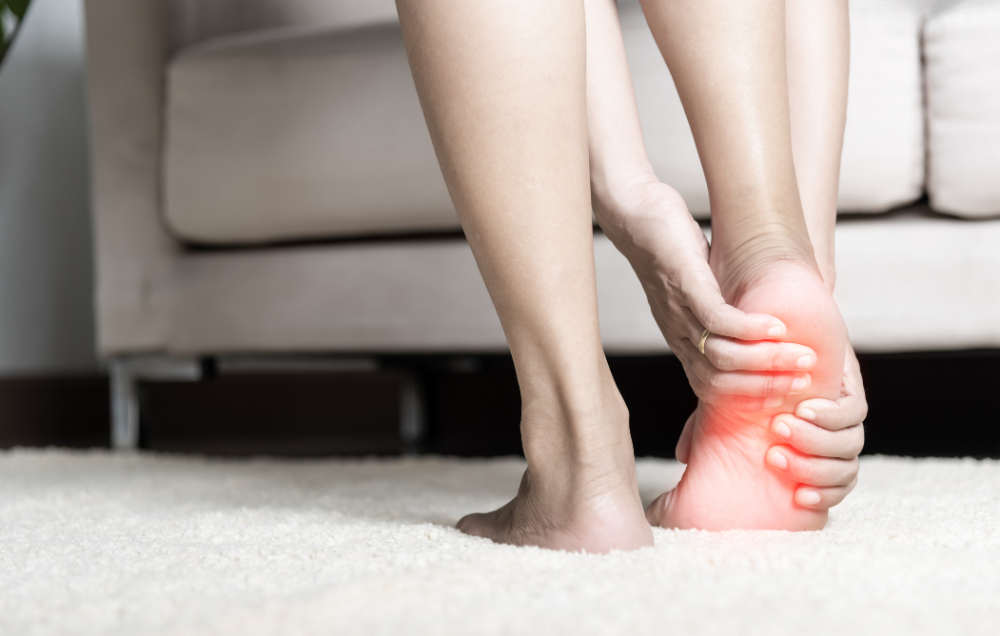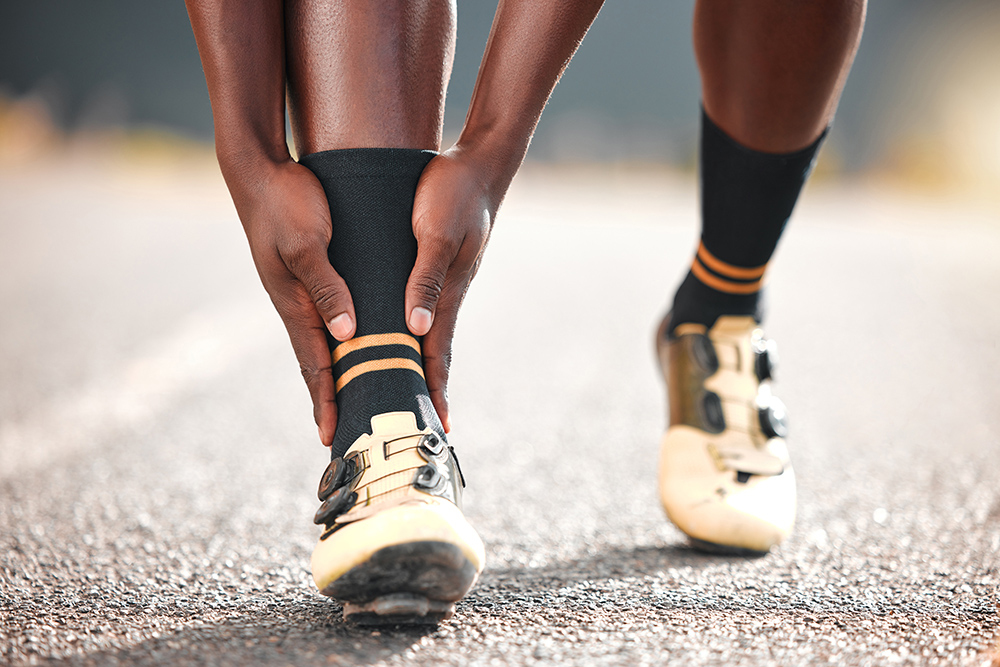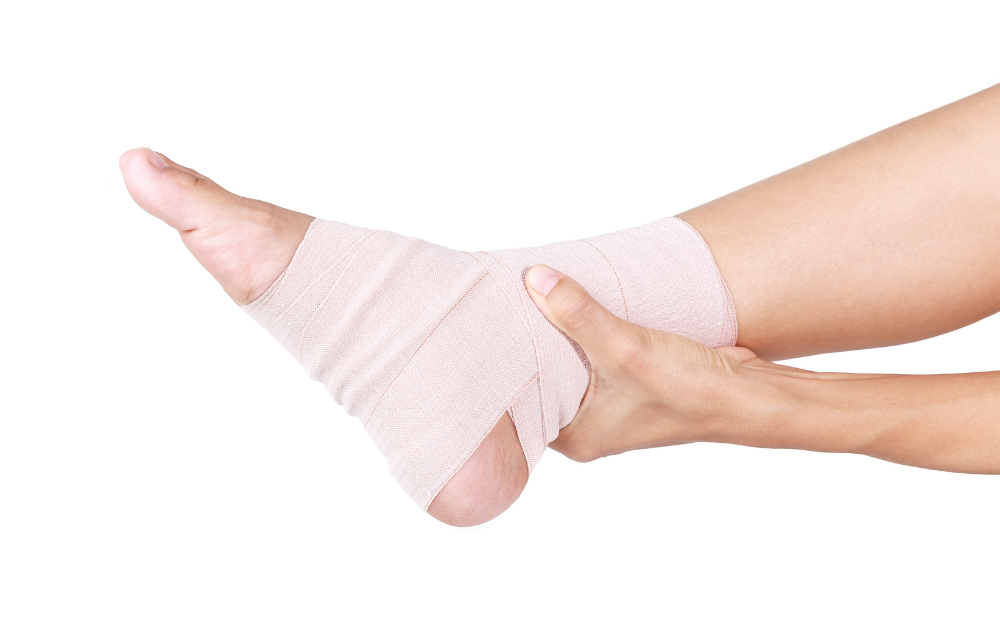Contents
Pain in the feet, heels and ankles can seem to show up out of nowhere. You might be wondering if you twisted your ankle without realizing it or if you bruised the bottom of your heel by stepping down too hard. Those things are possible, but it’s more likely that you’re developing an overuse injury. If you’re on your feet all day for work, if you do physical labor or if you play a sport, you may develop an overuse injury at some point. Wearing shoes with the right support, warming up, stretching and giving your body time to rest are all important for the prevention of overuse injuries.
In this article, we’ll discuss seven common causes of sudden heel pain without injury and some physical therapy treatments that can help.
What’s causing my sudden heel pain without injury?
Most often, sudden heel pain is a result of an overuse injury. While you may not notice it happening, physical activities that put a lot of strain on your heels can cause parts of your heel to be damaged over time. Tearing, stretching or inflammation in any part of your heel can cause pain to appear suddenly without a traumatic injury. The most common overuse injuries that affect the soft tissue in the heel are plantar fasciitis, Achilles tendinitis, bursitis and heel spurs. Stress fractures and bone bruises or contusions are other possible injuries that affect bones.
7 potential causes of sudden heel pain without injury
The bones of your heel are held together with ligaments, and muscles are attached with tendons. There are also bursae, or fluid-filled sacs, around the heel joint that cushion it and reduce friction. Any of these parts can be injured from wear and tear over time. Give your feet a rest for at least a few days and try the RICE method to ease your pain and any swelling or inflammation: rest, ice, compression and elevation.
The following conditions can cause sudden ankle pain without an apparent injury:
- Plantar fasciitis — This is the most common cause of heel pain. The plantar fascia is a strip of thick tissue on the bottom of your foot, attached to the heel and the ball of your foot. When it becomes inflamed from overuse, it can be very painful. Standing on your feet all day, walking on a hard surface, or wearing shoes with no arch support may cause plantar fasciitis. People with high arches or flat feet may be more prone to plantar fasciitis.
- Achilles tendinitis — The Achilles tendon attaches the calf muscle to the heel bone. People who put a lot of strain on their feet, like athletes, runners and people with physical jobs, may be more likely to have Achilles tendinitis. Having weak calf muscles, playing sports infrequently or playing without warming up can increase your chances of developing it.
- Osteoarthritis — The most common form of arthritis, osteoarthritis happens when the cartilage in the joints starts to deteriorate with age. It can affect any joint in the body, including the ankles and joints in the midfoot. Sudden ankle pain may be a symptom of osteoarthritis, especially in older adults.
- Bursitis — Bursae are fluid-filled sacs that reduce friction in the joints and act as shock absorbers. They can become inflamed and irritated after an injury or through overuse. Sometimes bursitis is a result of an infection. Bursae on the bottom of the heel, the back of the heel and the outside edge of the heel may cause sudden heel pain when inflamed.
- Stress fracture — A stress fracture is the result of pressure or overuse over time. Suddenly increasing your physical activity, playing a sport with poor form, and working or practicing too much without taking time to rest can cause stress fractures in the heel bone. You may notice pain, tenderness and swelling.
- Heel spur — A heel spur is a bony growth that forms on the bottom of the heel if a person has plantar fasciitis for a long time and sometimes in people with gait disorders. This is a movement disorder that affects the way you walk. Many people with heel spurs don’t know that they have them, but they can become painful.
- Bone bruise (contusion) — Stepping down on something hard can cause the heel bone to bruise. While this is technically an injury, it may not be noticeable at first. Fluid builds up inside it and your heel may become tender to the touch. It’s important to rest and give a bone bruise time to heal so you can avoid a fracture.
What physical therapy treatments can help with sudden heel pain?
Physical therapy treatments for overuse injuries in the heels and ankles typically involve mobilizing stiff tissue. The main goal is to increase your range of motion while promoting healthy movement and circulation. This will support your body’s natural healing processes.
The following physical therapy treatments can help relieve sudden heel pain:
- Manual therapy — Your PT may use their hands to loosen up stiffness in soft tissue and mobilize the joints in your feet. There are several manual therapy techniques, including trigger point therapy, which focuses on loosening up knots of tension in layers of soft tissue.
- Instrument-assisted soft tissue mobilization (IASTM) — This is a variation of manual therapy in which the PT uses a set of stainless steel tools. They glide the tools across your skin to locate scar tissue and then break it up.
- Ultrasound — Heat boosts circulation, which is good for soft tissue injuries. Your PT may use heat from an ultrasound wand to help promote healing deep inside muscles and tendons in your heel.
- Electrical stimulation and transcutaneous electrical neuromuscular stimulation (TENS) — Mild electrical stimulation can sometimes help trigger the body’s healing response. This helps you reabsorb scar tissue to restore healthy movement in tissue fibers.
- Therapeutic exercise and stretching — After the initial recovery phase, your PT will guide you through stretching and strengthening exercises. This will help you get your strength back and make your feet and heels more resilient to prevent reinjury.
- Gait training — If your walking style has been affected by your injury, or if it was a contributing factor, your PT may do some gait training with you. This helps correct imbalances and disordered movement in your stride.
Get relief from sudden heel pain at Lattimore PT
The only way to know for sure what’s causing your sudden heel pain is to see a physical therapist for an assessment. Your PT will ask some questions about your symptoms and do some physical tests to see how your heel is currently functioning. They’ll help you narrow down the likely cause and create a personalized treatment plan for your specific condition. Many of the treatments in this blog post provide relief in as little as one visit. Depending on the extent of your injury and other health factors, it may take a couple of weeks or a few months to heal from an overuse injury.
At Lattimore PT, we take the time to get to know our patients and listen to your concerns. We also provide education to help you make the best treatment decisions. Our PTs make treatment recommendations and then work with you to create your treatment plan.
Many of the PTs on our team have a Certification in Orthopedic Manual Physical Therapy (COMT). This means they have specialized expertise in assessing musculoskeletal conditions and prescribing natural treatments based on your unique symptoms.
Are you ready to find out what’s causing your heel pain? Contact our team today and let’s schedule an assessment.



